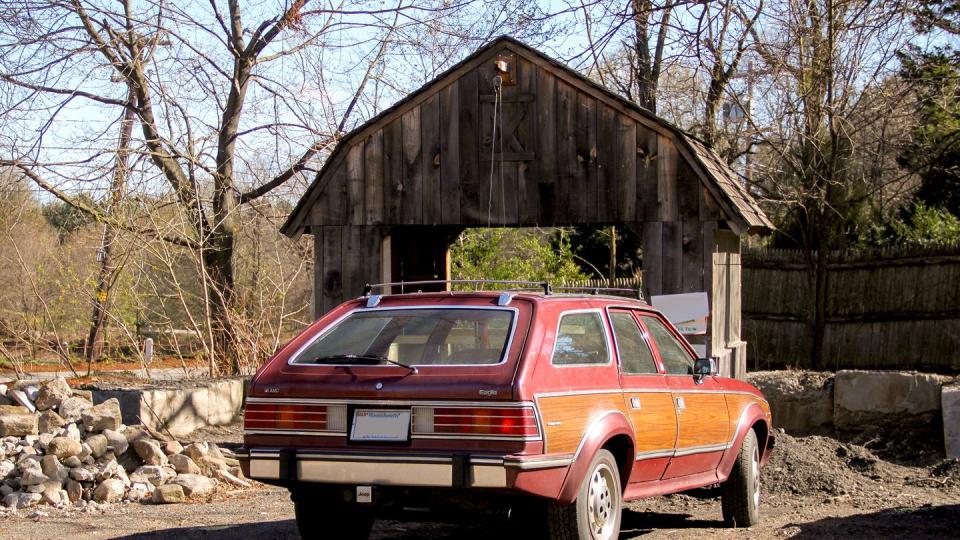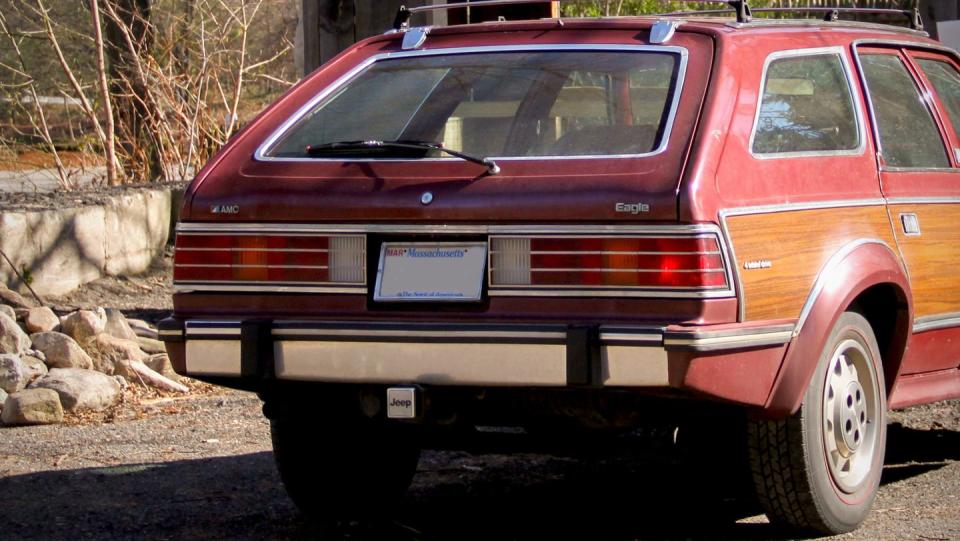Street-Spotted: AMC Eagle Wagon

Every time we see an AMC Eagle, we are reminded of just how influential the model ended up being, even though it was launched at a precarious time for AMC and was quickly overshadowed by other corporate developments.
The Kenosha automaker used the Concord platform in creating the Eagle, adding four-wheel drive, and it seemed clear from the start that this transformation was greater than the mere sum of its parts suggested.
It's easy to forget, but at the time it was largely Subaru that was offering cars with four-wheel drive. But Subarus also were somewhat obscure—the Subaru of the 1970s in America was not the Subaru of today. Station wagons were certainly popular in America when the AMC Eagle debuted for 1980, and you could certainly get four-wheel drive in a large SUV or truck.
But finding four-wheel drive in a station wagon, especially a system you could use all the time, was a much newer concept that was only starting to be explored.
AMC was lucky to be among the first to capitalize on it, with the automaker by now being forced to turn lemons into lemonade to stay afloat.
One aspect of the Eagle that has become more difficult to appreciate over 40 years later is that it was actually a small car for the time, when family station wagons could take up a massive amount of space on the road. And it still looks larger in photos than it is in real life.

Engines were equally small, with 2.5-liter AMC or GM Iron Duke units on the menu, with the AMC 4.2-liter inline-six being the beefy option.
It's also easy to forget that the Eagle was offered in quite a few bodystyles, including a four-door sedan, two-door coupe and hatchback, as well as a two-door convertible. Those versions are far rarer than the station wagon—and were even rare at the time they were new.
A few publications at the time of the model's debut in late 1979 took a swipe at its exterior design. Viewed through today's eyes it actually seems rather traditional, with woodgrain being one of the major time stamps of the era.
But its lifted suspension perhaps barely even registers as something unusual today. That's how familiar wagons and crossovers have become over the past 30 years.
Overall, car magazines of the time certainly recognized that AMC had something special with the Eagle, something that was ahead of its time. The reaction from the automotive press was favorable early on.
But it was also difficult to tell if such a niche segment would take off immediately, with the early buzz confined to the snowy states.
Soon after the debut of the Eagle, AMC began its French phase with Renaults imported from Europe and also Renaults that would be built in Kenosha. So AMC did not quite focus on the Eagle and its potential right away for external reasons, while also selling plenty of Jeeps.
The Jeep Cherokee, lest we forget, arrived quite soon after the launch of the Eagle lineup and found a much bigger audience.
Ultimately, Jeep would be the prize of what remained of AMC by the end of the decade, making the Eagle an overlooked success for the automaker.
This Eagle wagon we saw on a cold spring day in Massachusetts was very minty on the outside, so perhaps it hadn't seen too many New England winters.
Could AMC have made it into the 1990s with models under its own brand, or was it largely done as a brand by the time Chrysler bought up its remains? Let us know what you think.

 Yahoo Autos
Yahoo Autos 